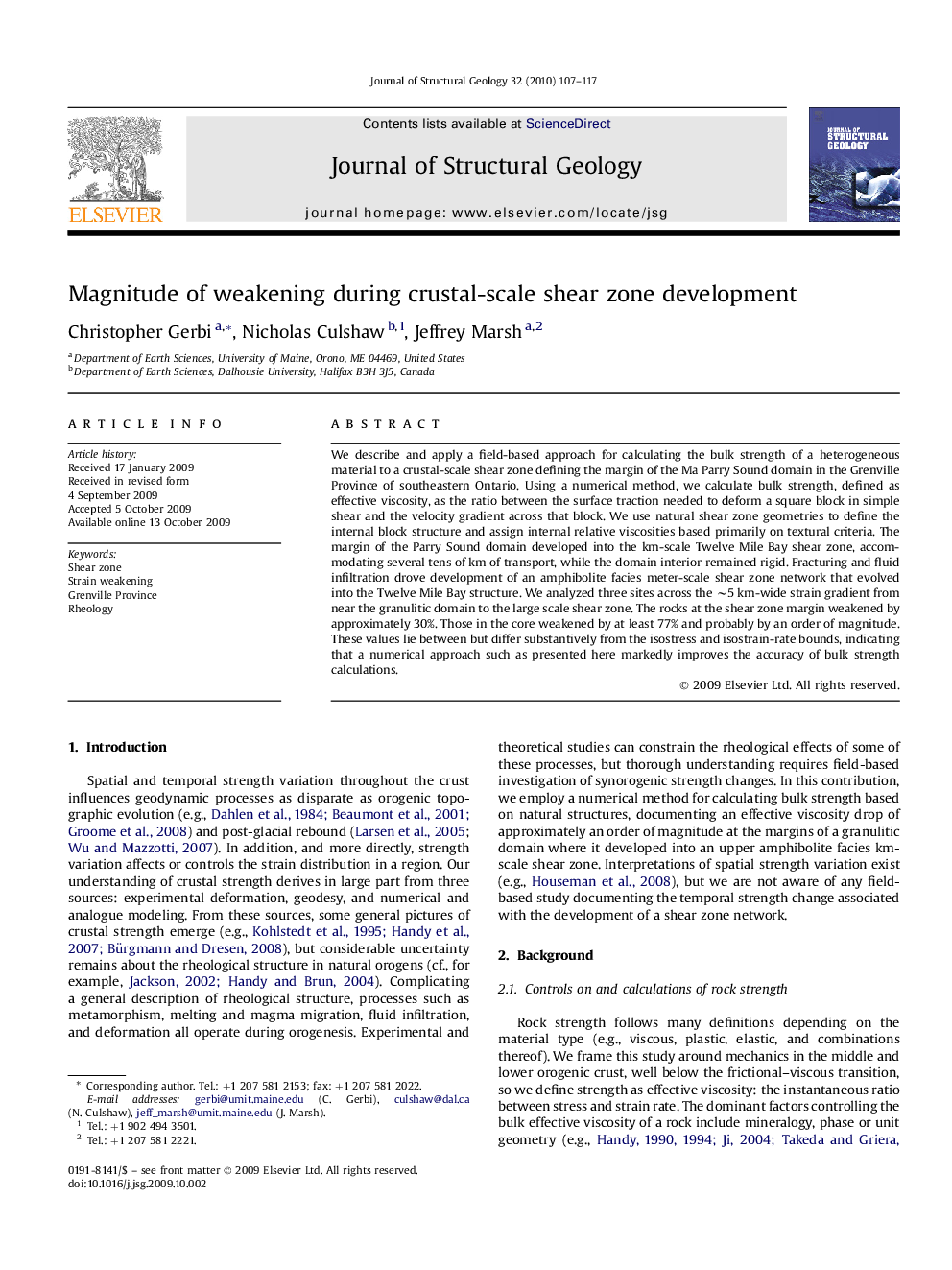| Article ID | Journal | Published Year | Pages | File Type |
|---|---|---|---|---|
| 4734125 | Journal of Structural Geology | 2010 | 11 Pages |
Abstract
We describe and apply a field-based approach for calculating the bulk strength of a heterogeneous material to a crustal-scale shear zone defining the margin of the Ma Parry Sound domain in the Grenville Province of southeastern Ontario. Using a numerical method, we calculate bulk strength, defined as effective viscosity, as the ratio between the surface traction needed to deform a square block in simple shear and the velocity gradient across that block. We use natural shear zone geometries to define the internal block structure and assign internal relative viscosities based primarily on textural criteria. The margin of the Parry Sound domain developed into the km-scale Twelve Mile Bay shear zone, accommodating several tens of km of transport, while the domain interior remained rigid. Fracturing and fluid infiltration drove development of an amphibolite facies meter-scale shear zone network that evolved into the Twelve Mile Bay structure. We analyzed three sites across the â¼5 km-wide strain gradient from near the granulitic domain to the large scale shear zone. The rocks at the shear zone margin weakened by approximately 30%. Those in the core weakened by at least 77% and probably by an order of magnitude. These values lie between but differ substantively from the isostress and isostrain-rate bounds, indicating that a numerical approach such as presented here markedly improves the accuracy of bulk strength calculations.
Related Topics
Physical Sciences and Engineering
Earth and Planetary Sciences
Geology
Authors
Christopher Gerbi, Nicholas Culshaw, Jeffrey Marsh,
